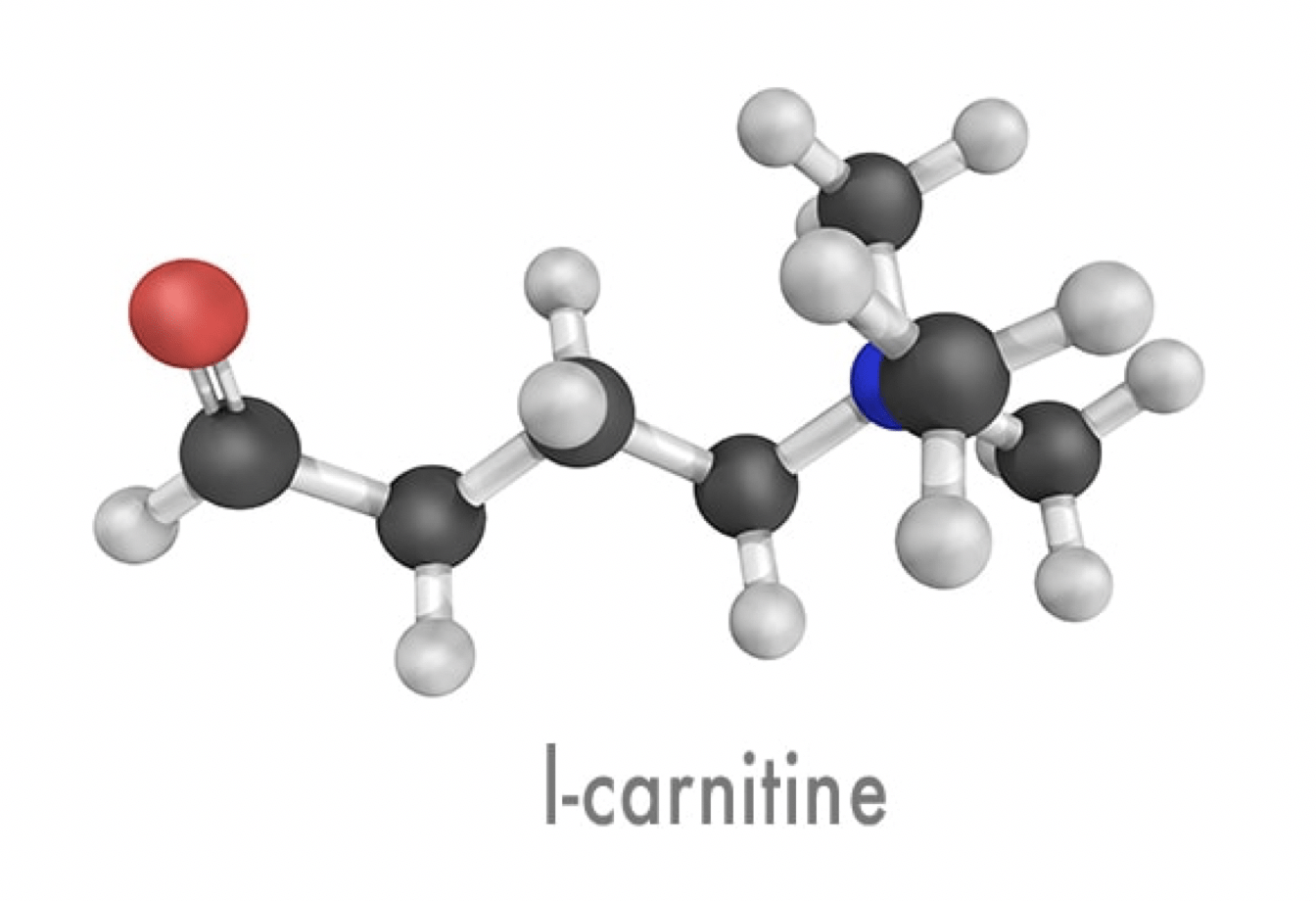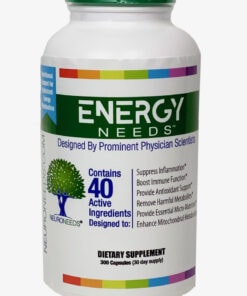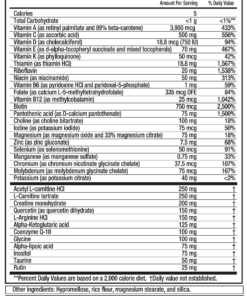CARNITINE
Carnitine in EnergyNeeds®
 Opinions vary in terms of whether carnitine or acetylcarnitine is better for supplementation, thus EnergyNeeds® contains both in equal amounts. Side effects are not anticipated for the doses present in EnergyNeeds®. Your health care provider may want to order blood carnitine levels to determine whether the blood level on EnergyNeeds® is adequate for you. Suboptimal blood levels may be present in individuals with certain metabolic defects.
Opinions vary in terms of whether carnitine or acetylcarnitine is better for supplementation, thus EnergyNeeds® contains both in equal amounts. Side effects are not anticipated for the doses present in EnergyNeeds®. Your health care provider may want to order blood carnitine levels to determine whether the blood level on EnergyNeeds® is adequate for you. Suboptimal blood levels may be present in individuals with certain metabolic defects.
The Details
What Is Carnitine?
Carnitine is chemically an amino acid, but it is not one of the 20 plus amino acids that comprise proteins. The bioactive stereoisomer (the type that works in the body) of carnitine is the L form, which is what is found in supplements, so the compound is also known as L-carnitine or levocarnitine. Carnitine is naturally produced by our bodies; thus, it is technically not a vitamin.
What Does Carnitine Do?
The primary purpose of carnitine is to act as a ferry to carry long-chain fatty acids across the inner mitochondrial membrane. The vast majority of fat in our diet, and that stored in our bodies, is long chain, and these fat molecules cannot get into the mitochondria, where they are oxidized (metabolized, used, burned), without carnitine. Fat is the major source of stored energy in our bodies and in the animals that make up much of our diets. Thus, carnitine is essential for fat metabolism, and helps the body to produce energy.
The second purpose of carnitine is to ferry incompletely oxidized (“half-burned”) fatty acids, organic acids, and other metabolic intermediates out of the mitochondria. A good analogy is an automobile, which oxidizes (burns) gasoline, which is chemically similar to some fatty acids. If the engine is not operating cleanly, half-burned gasoline is emitted as smoke. This is especially noticeable when the engine is under “stress”, such as driving up a mountain road at high speed. The result can be decreased performance and increased wear-and-tear (aging) damage to the engine. Similarly, if the body’s mitochondria are not operating cleanly, half-burned fatty acids are emitted as acids, which are especially noticeable when the person is under “stress”, such as with illness, surgery, or strong emotions. The result can be decreased performance (fatigue, weakness, “brain fog”) and increased wear-and-tear (aging) damage to the body (manifesting as organ dysfunction, pain, etc.). Carnitine plays a detoxifying role by ferrying these incompletely oxidized fatty acids and organic acids out of the mitochondria, where they can be excreted in the urine or stool.
What Does a Carnitine Deficiency Appear as?
While our bodies can make carnitine, our bodies do not always make enough carnitine, and it is an important dietary component. In particular, carnitine from the diet is needed in young children, people of all ages under substantial stress (such as illness), and in people with many metabolic and mitochondrial disorders. Children with severe defects in the protein that transports carnitine across cell membranes have severe carnitine deficiencies due to excessive losses of carnitine by the kidneys. The result is a fatal, infantile-onset metabolic disorder resulting in weakness to the heart muscle (cardiomyopathy) and the skeletal muscles. High doses of carnitine essentially prevent all signs of the illness. Children and adults with lesser degrees of carnitine deficiency can present in many ways, but fatigue and muscle weakness are common.
What About Carnitine‘s Use in Disease?
Carnitine is often supplemented in a variety of conditions, including multiple metabolic and mitochondrial disorders, as well as in people taking valproate (Depakote), as it depletes carnitine. Carnitine has been shown in studies to likely help people with autism.
Because of increased ability to cross the blood-brain barrier, acetylcarnitine is sometimes used for a variety of brain disorders including Alzheimer disease, age-related memory loss, depression, and thinking problems related to acquired issues such as alcoholism or Lyme disease. It is also used for Down syndrome, poor circulation in the brain, cataracts, nerve pain due to diabetes, nerve pain due to drugs used in the treatment of AIDS, and facial paralysis.
What Form of Carnitine is Best?
Acetylcarnitine (sometimes called acetyl-L-carnitine or ALCAR) is a derivative (form) of carnitine that provides a good source of carnitine for the body. The addition of the acetyl group to carnitine makes this product more bioavailable, meaning it can more easily cross membranes to be absorbed from the gut to the blood, and from the blood to the brain. Expert opinions vary in terms of whether L-carnitine or acetyl-L-carnitine is better for supplementation, and good arguments can be provided on both sides. Dr. Boles has managed families that appear to do better on L-carnitine or acetyl-L-carnitine. The answer likely lies in part with differing genes in which sequence variation predisposes towards the development of disease in different individuals.
What Are the Common and/or Important Side Effects of a Carnitine?
In Dr. Boles’ experience in treating hundreds of patients with L-carnitine, side effects are few. The most-common side effects are GI, especially nausea, diarrhea, and a fish-like odor. Nausea and diarrhea can occur at higher dosages, but are rare at moderate dosing. Carnitine can make the stools looser, and in fact, carnitine at high dosage is often helpful in treating constipation. A fish-like odor is common at very-high dosing, but again is quite rare at moderate dosage. Oftentimes, this odor resolves with riboflavin supplementation, which is also in EnergyNeeds®.
Is There Any Laboratory Testing for a Carnitine Deficiency?
Laboratory testing can in many cases be helpful in terms of optimizing carnitine supplementation. Dr. Boles has observed that free (unbound) carnitine levels in the blood over 30 to 40 mcmole/L are often associated with an improved outcome. In addition, incompletely oxidized fatty acids attached to carnitine can be measured in the blood by a test called a “plasma acylcarnitine profile”. Sometimes, this test can be useful to better understand the specific metabolic abnormalities in an individual, and to make the corresponding adjustments to diet or other aspects of therapy. This test is often more helpful in a person on carnitine supplementation.
What About Additional Dosing Beyond EnergyNeeds®?
Blood carnitine levels should be in the desired range on this moderate dosing, but may not be in the case of certain metabolic disorders. Your health care provider may want to order blood carnitine levels on you a couple of weeks or more on EnergyNeeds® to ensure that the blood level is adequate, and to recommend adding additional supplementation if otherwise.
Order EnergyNeeds® Today
Formulations


